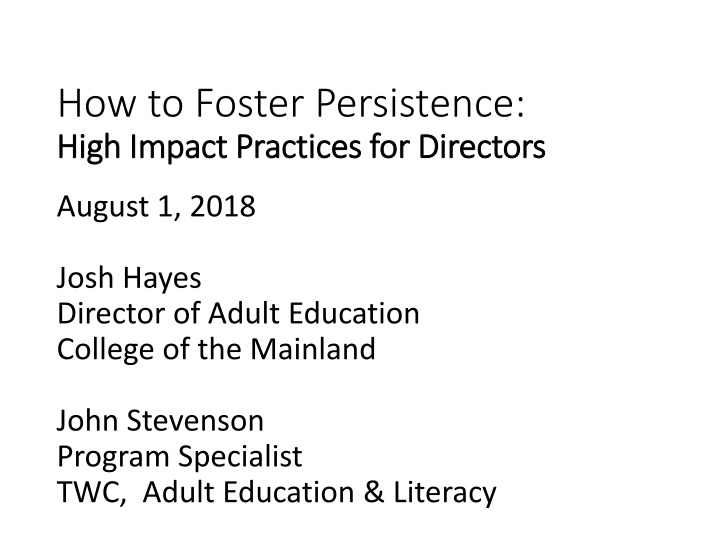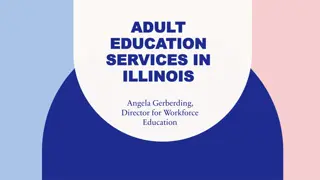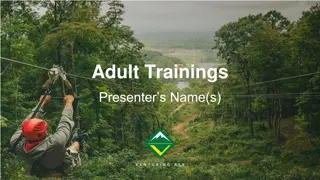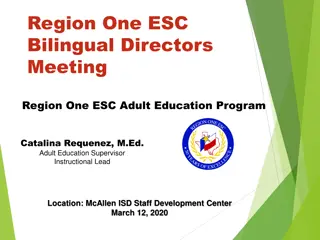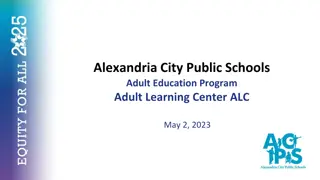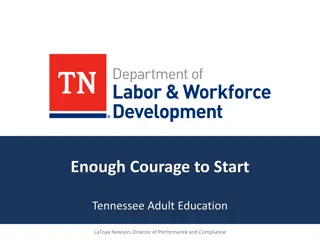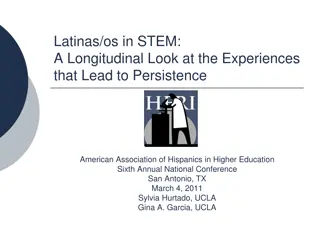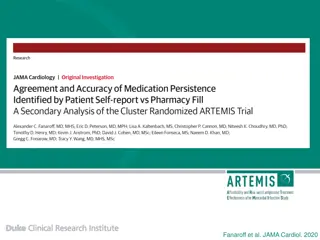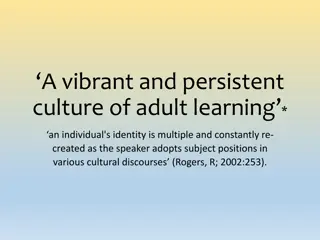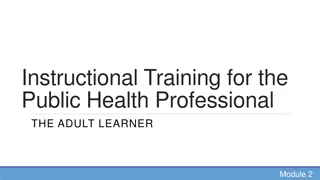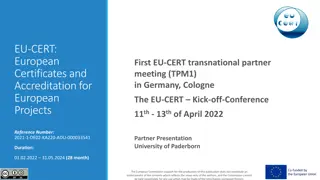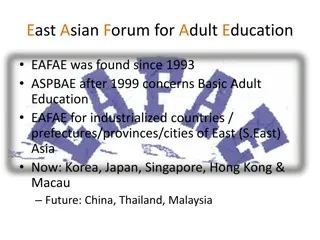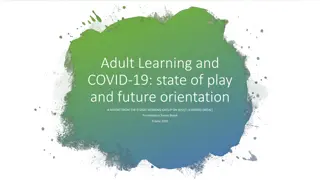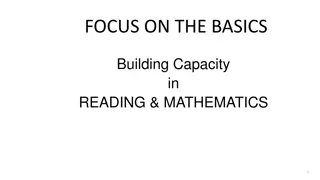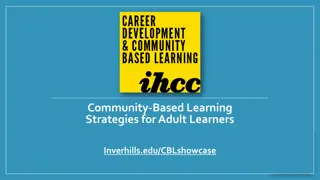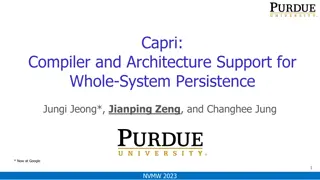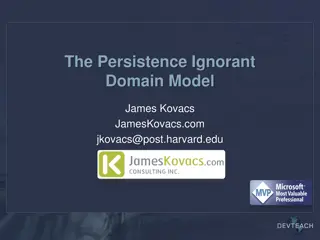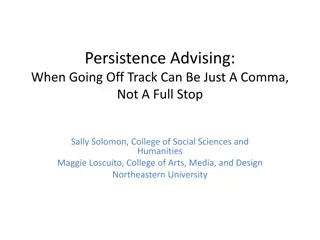High Impact Practices for Fostering Persistence in Adult Education Programs
Explore effective strategies and insights on fostering persistence among adult learners in educational programs. Learn about recruitment techniques, intake processes, and program design to support learners in achieving their educational goals. Dive into activities and surveys to enhance understanding of learner persistence. Gain valuable insights on engaging serious students and designing programs for long-term success.
Download Presentation

Please find below an Image/Link to download the presentation.
The content on the website is provided AS IS for your information and personal use only. It may not be sold, licensed, or shared on other websites without obtaining consent from the author.If you encounter any issues during the download, it is possible that the publisher has removed the file from their server.
You are allowed to download the files provided on this website for personal or commercial use, subject to the condition that they are used lawfully. All files are the property of their respective owners.
The content on the website is provided AS IS for your information and personal use only. It may not be sold, licensed, or shared on other websites without obtaining consent from the author.
E N D
Presentation Transcript
How to Foster Persistence: High Impact Practices for Directors High Impact Practices for Directors August 1, 2018 Josh Hayes Director of Adult Education College of the Mainland John Stevenson Program Specialist TWC, Adult Education & Literacy
Persistence Persistence Definition of Learner Persistence: Adults staying in programs for as long as they can, engaging in self-directed study or distance education when they stop attending program services, and returning to program services as soon as the demands of their lives allow. Persistence is a continuous learning process that lasts until an adult student meets his or her educational goals, and persistence could start through self-study before the first episode of participation in a program. Persistence ends when the student decides to stop learning. (Source: NCSALL, 2007)
Activity 1 What s Your PQ? Complete the PQ Survey and calculate your persistence quotient.
High Impact Practices for Persistence Recruitment Intake Orientation Attendance Program Design
Recruitment: How does the community see your program? As a free program or as an intensive program A program for serious students or a program for anybody who wants to join A program than answers the question, How long will it take? with it depends or a program that answers the question, We have a plan.
Researching Recruitment: Questions & Strategies What is the first impression callers get we they contact you? What kind of student are you looking for? Do your partners understand that you want serious students? Do your brochures, webpages and other communications reflect a program that is designed to achieve specific outcomes?
Activity 2 Look at your handout entitled Pathways to Persistence and think about what kind of students you mostly have in your program.
Intake Cattle Call vs. Prolonged Intake
Prolonged Intake Practices Advantages Disadvantages Better understanding of program structure Clear Understanding of expectations More time to set reasonable goals More accurate placement into classes Fewer tryout students Development of better relationships with program staff Challenge to meet enrollment targets Staffing required for continuous intake Provide services to students who will elect not to participate
Orientation Securing a Strong Commitment
Force Field Analysis A force field analysis is a process for analyzing supports and barriers that impact persistence to a goal. First the student writes his goal. Next, the student lists all the things that support him in reaching the goal. For example, he might write items like family support, access to Internet or friends in the same class. Then, the student assigns weight to each item. The weights are ascribed numerically with number from one to ten. Next, the student lists all the barriers that stand in the way of achieving this goal. For example, he might write thinks like the cost of tuition or lack of dependable transportation. Next, the students assigns weights to each barrier as he did with the supports. Finally, the weights of the supports and barriers are tallied. The student considers how he might reduce the weight of the barriers or increase his supports.
Activity 3 Select a personal goal and use the force field analysis template to identify key supports and barriers. Assign a weight (from 1 to 5) for each support and each barrier.
Supports & Barriers - Top 10 List Positive Forces Negative Forces Relationships Instruction Goals Teacher/students Positive self Life demands Relationships Negative self Learning process instruction
Enhancing Attendance Distance Learning Tutoring Supports Communication Options
Attendance Policy Put it in writing
Activity 4 Use the Attendance Policy Guidelines rubric to evaluate your own attendance policy
Program Design Practices that Work
High Impact Practices Discussion
